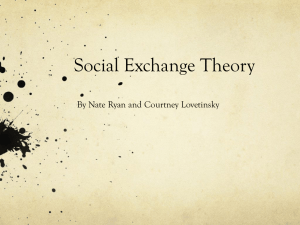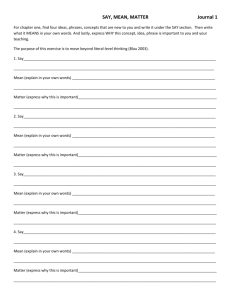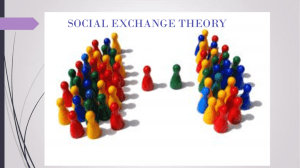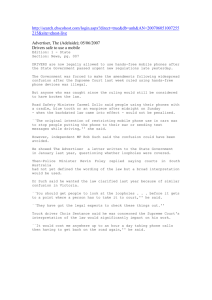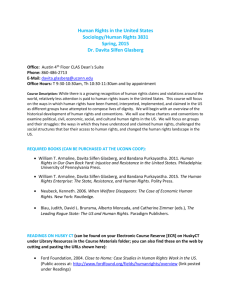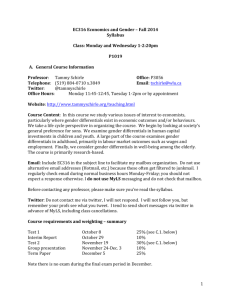LiamBlauEssayLF 2
advertisement
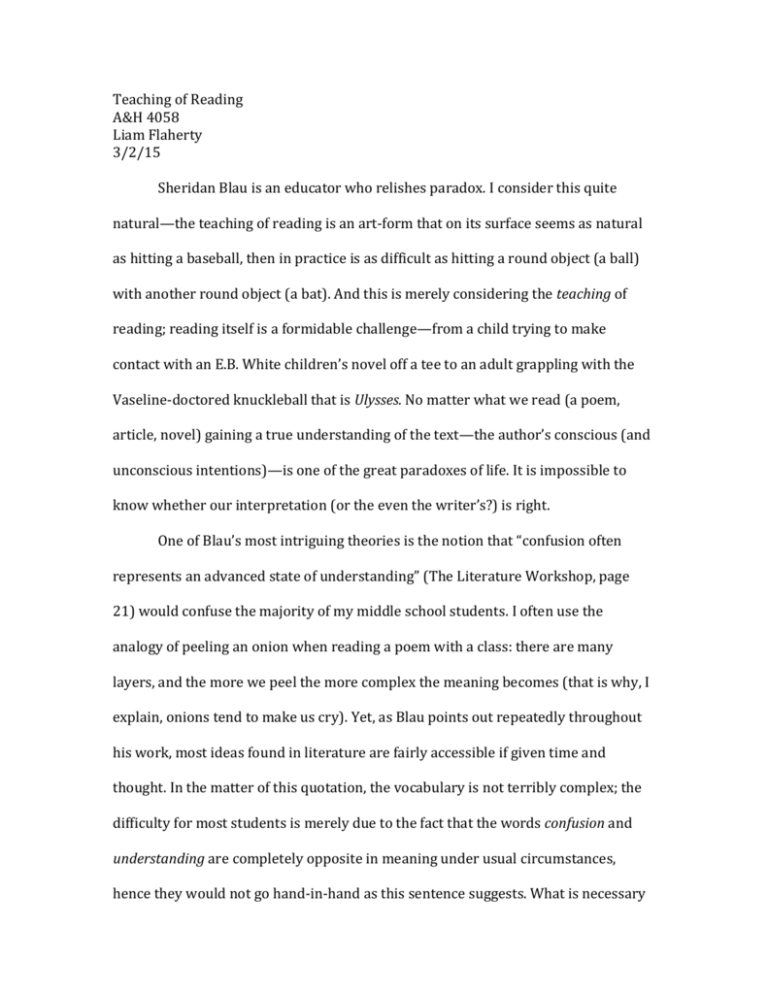
Teaching of Reading A&H 4058 Liam Flaherty 3/2/15 Sheridan Blau is an educator who relishes paradox. I consider this quite natural—the teaching of reading is an art-form that on its surface seems as natural as hitting a baseball, then in practice is as difficult as hitting a round object (a ball) with another round object (a bat). And this is merely considering the teaching of reading; reading itself is a formidable challenge—from a child trying to make contact with an E.B. White children’s novel off a tee to an adult grappling with the Vaseline-doctored knuckleball that is Ulysses. No matter what we read (a poem, article, novel) gaining a true understanding of the text—the author’s conscious (and unconscious intentions)—is one of the great paradoxes of life. It is impossible to know whether our interpretation (or the even the writer’s?) is right. One of Blau’s most intriguing theories is the notion that “confusion often represents an advanced state of understanding” (The Literature Workshop, page 21) would confuse the majority of my middle school students. I often use the analogy of peeling an onion when reading a poem with a class: there are many layers, and the more we peel the more complex the meaning becomes (that is why, I explain, onions tend to make us cry). Yet, as Blau points out repeatedly throughout his work, most ideas found in literature are fairly accessible if given time and thought. In the matter of this quotation, the vocabulary is not terribly complex; the difficulty for most students is merely due to the fact that the words confusion and understanding are completely opposite in meaning under usual circumstances, hence they would not go hand-in-hand as this sentence suggests. What is necessary for the comprehension of this idea, that confusion means greater understanding (because a paradox is like a riddle, and most people, particularly young ones, love solving these kinds of problems), is to re-read and then collaborate with your peers to reach a certain identified level of understanding (and as is sometimes the case when getting several layers down into the onion, deepen confusion). One of Blau’s basic tenets is that these concepts—collaboration and re-reading—are two of the most vital practices that enable students to become better readers. As a middle school teacher working with three grades (6th, 7th, and 8th) one of the most significant challenges I face is differentiating between trying to improve a young person’s reading and trying to improve a young person’s thinking. When reading another one of Blau’s treasured paradoxes, that “reading is more like writing than writing is” (53) I could not help but think that reading is more like thinking than thinking is. He explains how additional reading is always helpful in gaining greater insight (and, consequently, greater confusion) of a text, whereas additional writing often causes a piece to lose the spark of creativity that helped bestow it with an original value and entertaining quality. A similar intellectual parallel can be drawn between thinking and reading. A good amount of the thinking that takes place during a day is mundane and commonplace. People sit around thinking about their daily tasks and stresses, or musing about past failures or successes (those that may, or often as not, may not have even happened). I believe the true value of reading is in how it spurs our thoughts to a greater purpose (often leading to inspired writing). In much the same way that Blau insists “the only texts worth reading are texts you don’t understand” (24), I would add that the only texts worth reading are the ones that stimulate thought and produce original writing. Yet I find that so much of the literature that students are reading in school is failing to arouse their intellectual curiosity. It is simply not getting them excited about reading. Is this the failure of the chosen texts? How the teacher sets up the class? More likely, I believe it is what Louise Rosenblatt points out in her transactional theory: “we want them to have a literary experience, but then test them on it as if they were to have read it for information” (145). This is an underlying concern for all teachers, especially those like myself in what are referred to as “high need” schools. Choosing literature the kids find interesting is actually not as hard as getting them out of the frame of mind of thinking, “how will this help me on the state test?” This is not the mind-set that embraces an appreciation and desire for confusion. Rosenblatt’s theory paved the way for the student-centered classroom that is now the goal of every Language Arts teacher in the DOE who wants a highly effective rating. A teacher’s tendency to want to “show off” knowledge is curtailed by the domains of Danielson, which does lessen a young educator’s fear of not knowing the canon well enough to teach effectively. If an educator can set up a classroom in a way in which students are eventually creating the discussion questions and essay prompts, a mastery of the text is not a mandatory requirement to successfully teach it. Of course, the purely response-based classroom has its drawbacks. Blau questions, among other things, whether response-based approaches are “adequate to the sensitive cultural challenges posed in courses featuring multicultural literature,” fearing that students have “already been shaped and situated by the culture of the school.” (4). Blau’s methods seem to blend those of Rosenblatt’s with a more traditional authoritative teacher-communicated style involving literary expounding. He allows students to drive the discussion, but he does offer context, including specific historical and authorial background given at well-thought out moments of a workshop. During the workshop on Pat Mora’s Sonrisas he often interjects in a manner that explains to the students what has just been taking place; for everyone to get a feel for where the conversation has gone thus far, and to determine where it can best go to everyone’s general satisfaction. My fears about Rosenblatt’s theories are more basic, yet perhaps more trying to the young, inexperienced teacher (that TC generally trains—and that tend to wind up in the most challenging teaching environments): what is the process by which students are able to learn the skills necessary to drive a class in a manner where they come to an understanding that embraces confusion, and will the students recognize that this confusion is indeed a deeper understanding of literature? I have used the Blau method of rating their understanding from 0-10, having the students work in the preferred groups of three, withholding certain information until what I surmise is the right moment of revelation. In general, I have been met with mostly zeros in understanding, little effort to re-read and analyze text line by line, and a yearning for me to tell them what “the text is about,” despite my repeated assertion that my reading has no more claim to validity than their own. By no means does this make me want to give up the approach. What I am still searching for is how a teacher can get students, specifically those who now are being taught that there is a wrong and right answer (and it is decided by those writing Measuring Up text booklets), to work harder, dig deeper, and not fear their opinions? One frustration I had while reading The Literature Workshop was when Blau told the story of a high school teacher and his inability to delve into the lines from MacBeth that confused both men. It was a terrific anecdote that came to the satisfying conclusion that they collaborated on finding the meaning to these 8-10 lines that had frustrated them both. To support his argument that we deepen our knowledge and learn conceptually by reading what we don’t know, he relates how “the lines that had puzzled us were the most interesting and informative of the whole scene…the puzzling lines puzzled us precisely because they had so much to teach us” (23). This is exactly the kind of learning I hope to foster in my classroom, yet how it was actually accomplished is not related (nor for that matter is the scene recalled). As much as I enjoyed the workshops that were presented, they seemed to be made up of students already capable of thinking on a higher level than so many of the students I have met thus far in the New York City classroom. My desire is to get my students to that level. The struggle is figuring out how.
